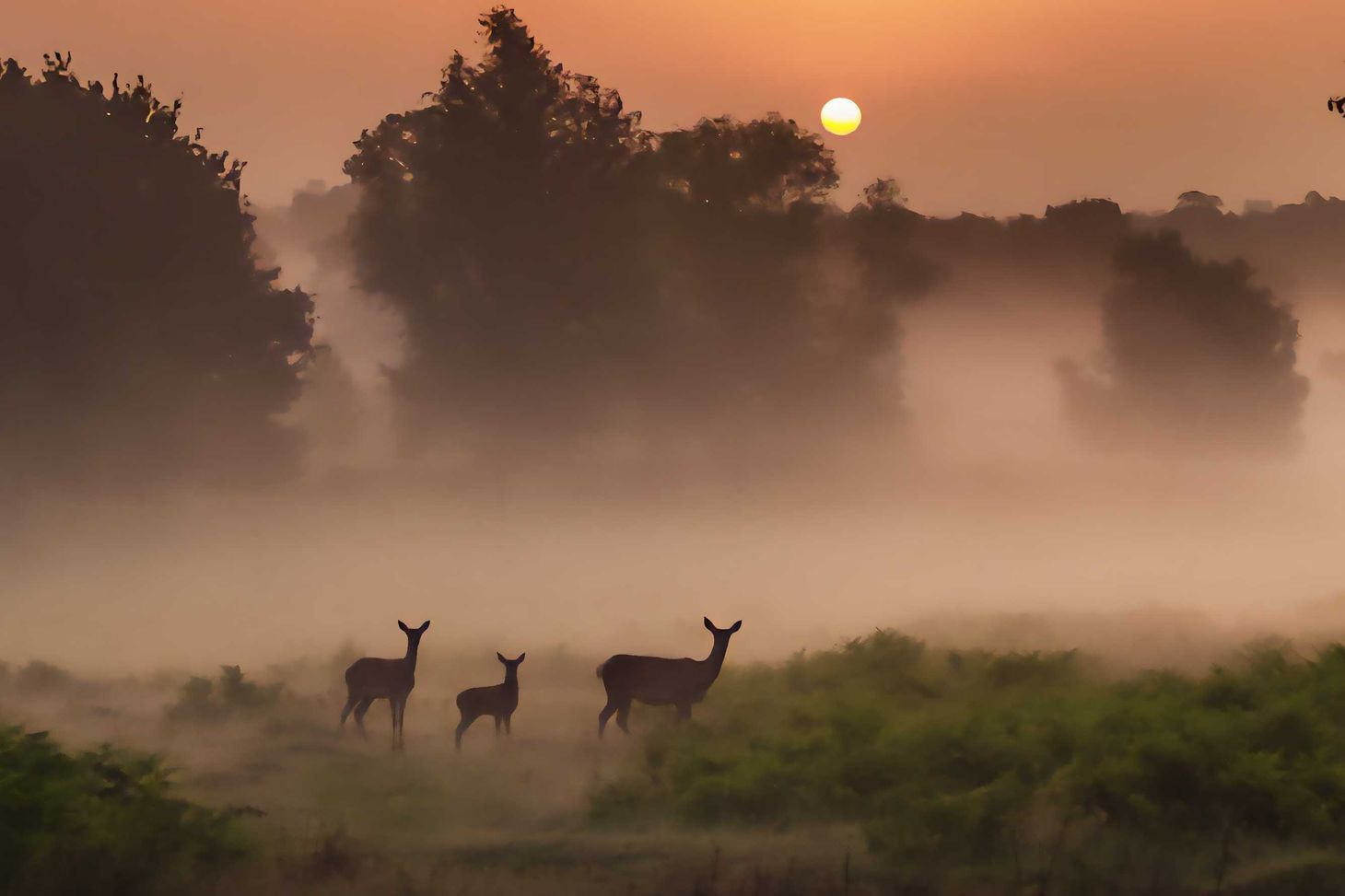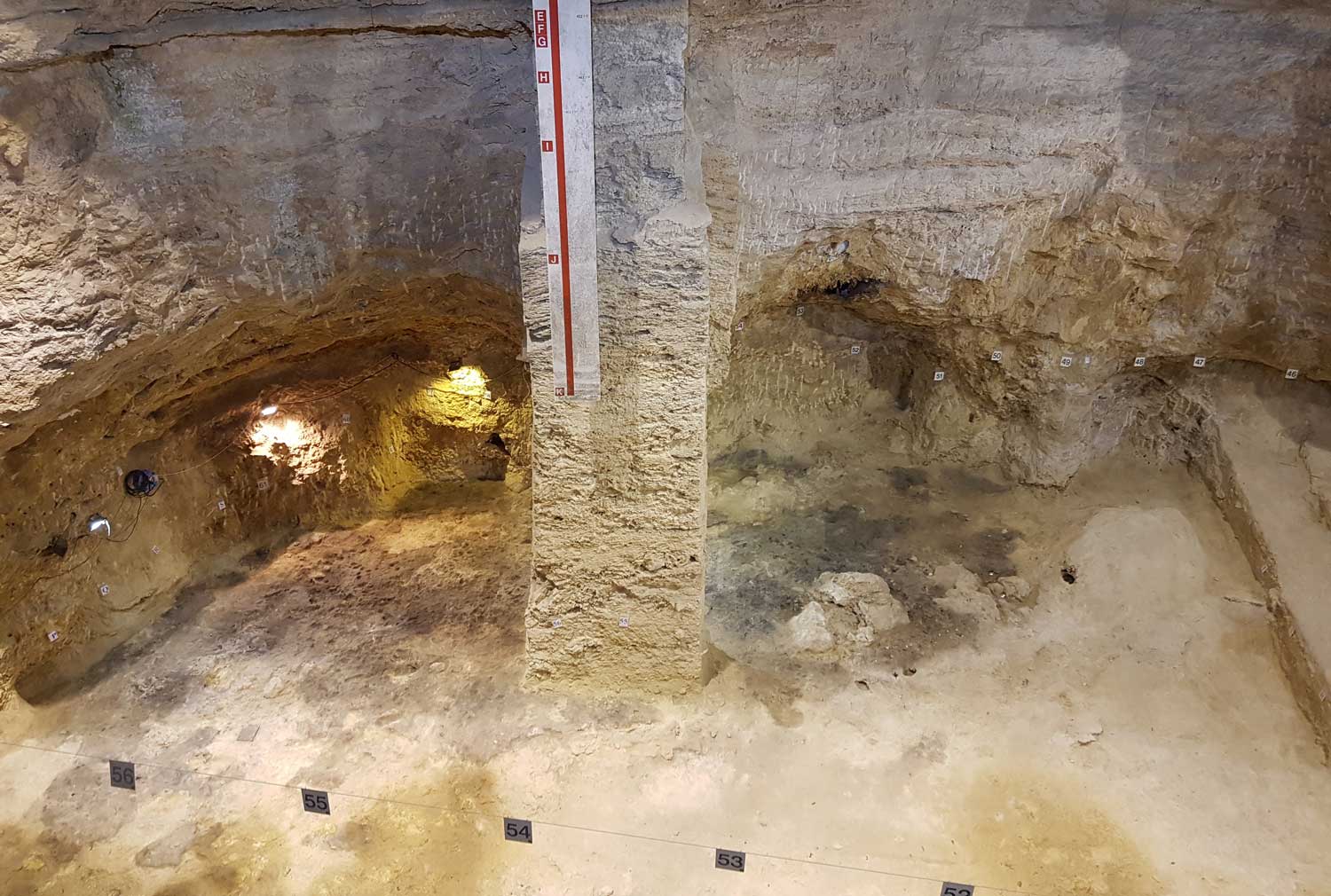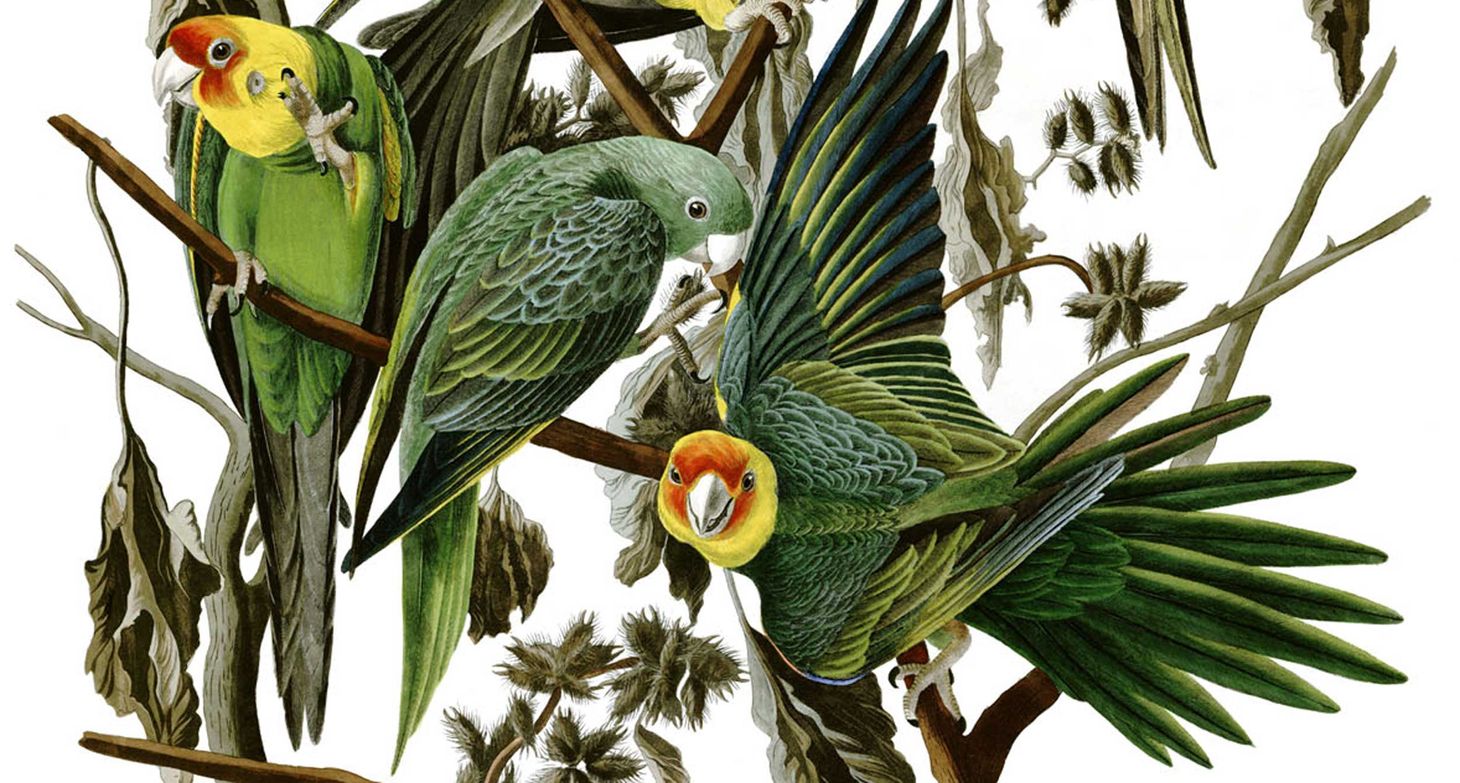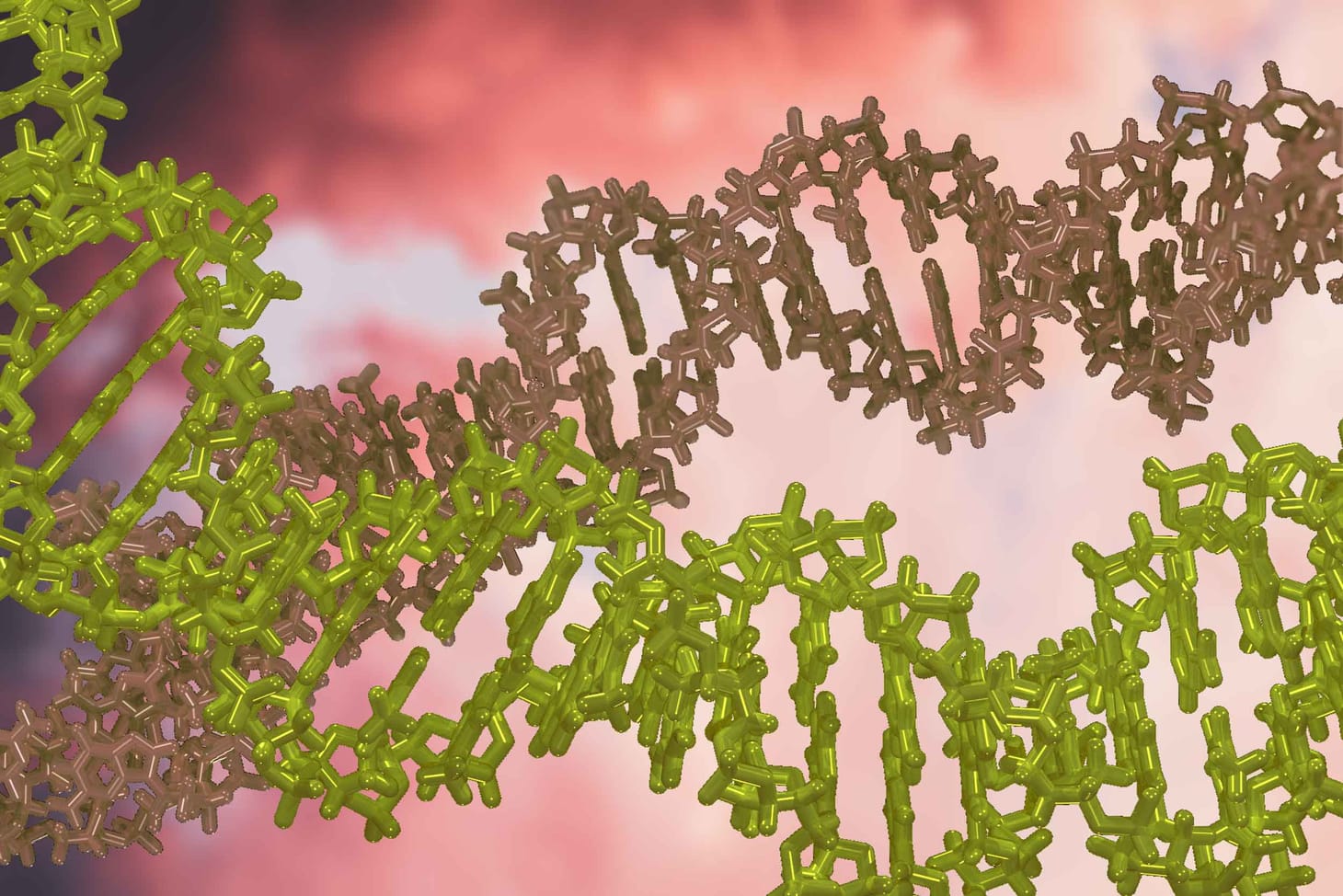Different transport strategies for different large prey species at Abric Romaní
Interpreting the record of prey exploitation at a rock shelter site over thousands of years provides a window into past economics.

Rock shelters and caves are unusual places in the landscape. They attract humans and other animals who are seeking out shelter from wind and rain or shade from the heat. Many caves and rock shelters become natural catchments for sediments, building up a sedimentary record that can span thousands—even millions—of years.
So archaeologists pay a lot of attention to these places. But these qualities of attracting activity from the surrounding landscape can make cave and rock shelter assemblages complicated to interpret.
Sometimes ancient hunters chose to carry meat to a cave or rock shelter to share with other people. The resulting grouping of bones and bone fragments tells us about several kinds of choices: what animals to hunt, how to kill them, what to share with their social group, what to carry and how far to carry it. A rock shelter site may represent episodes of hunting from many kill sites.
A great example is Abric Romaní, a rock shelter near Barcelona. This site is one of the most informative Neandertal archaeological sequences. It's especially notable for exceptional preservation of many hearths and some imprints that preserve the shape of tools that were made from wood. Juan Marín and coworkers examined the age profiles of horses and deer excavated from the site in a 2017 article, “Neanderthal hunting strategies inferred from mortality profiles within the Abric Romaní sequence”.

Marín and collaborators studied the faunal remains from several layers at Abric Romaní, from 53,000 to 43,000 radiocarbon years. The largest fraction of the large herbivore bones at the site were red deer and horses, with some rhinoceros, aurochs, and a few other large mammals. There are many cutmarks and percussion marks on the bones, and few marks left by carnivores, suggesting that Neandertals hunted most of the large mammals.
The red deer are a mix of prime age adults, juveniles, and older adults. This age distribution looks like the kill sites of bison, reindeer, and horse discussed by White, Pettitt and Schreve. The pattern is consistent the idea that the Neandertals used their understanding of landscapes and red deer behavior to put groups of hunters into situations where they could kill cornered animals. The red deer skeletal remains include most body parts, with no clear pattern of overrepresentation of any part. This suggests that kill sites may have been nearby Abric Romaní itself, making it easy for hunters to carry much of the carcass to the site for further butchering and eating.
Different levels of the Abric Romaní sequence show somewhat different patterns of red deer ages. One of the levels has two newborn deer with a few adults, suggesting a hunt during the birth season, while others show a less seasonal pattern.
The horses at Abric Romaní have a different age profile, mostly prime age adults with few juveniles or very old adult individuals. That might mean that the Neandertals had a strategy near Abric Romaní of hunting bachelor groups of horses, or they had situations that enabled them to hunt lone adult horses selectively. Morín and coworkers examined the microwear on the horse teeth, which they suggest was consistent with kills having been made during the same time of year.
When they killed horses, the hunters did not break down and carry whole carcasses to the rock shelter. For the most part, they brought heads and did not transport other body parts as often. Out of the postcranial skeleton, only the tibia is represented in much quantity. This pattern suggests that hunters were very selective in what they carried to the site, focusing on the head with its rich fatty cheek meat and brain.
The archaeologist John Speth has emphasized in a series of articles that Neandertals could not have been indiscriminate in their choice of age and condition of prey animals, for nutritional reasons. Predators like lions and wolves can subsist on diets with extremely high animal protein for a long time, but people cannot handle this without intake of substantial amounts of fat or carbohydrates. Neandertals had to be more selective in their prey choices than other hunters.
Those choices were more critical in some seasons than others. Prey animals were fat-depleted during the winter, and adult males more fat-depleted after the mating season.
Nor was meat the only reason for hunting. In their work on Abric Romaní, Marín and coworkers noted that the stone tools in several of the site's layers were well matched to the task of processing leather from hides. Young red deer would have had hides that were softer and easier to work than the hides of adults.
Neandertals had to meet social, economic, and energetic challenges with their decisions about hunting strategies and transport of carcasses. Abric Romaní preserves behavioral choices that span thousands of years. There were different seasons of hunger and plenty, times of easy hunting and times of extreme challenges. Archaeologists must integrating across these patterns of bones to understand how ancient people like the Neandertals lived.
For me, this kind of site makes me wonder. What do we share today with the decisions that people were making thousands of years ago? Our present economic and residence systems are so different from the Pleistocene world of hunter-gatherers. Yet trade-offs of time, the different uses of the same resources, and what we choose to share with others remain central to our decisions. What we leave behind must reflect these choices.
References
Marín, J., Saladié, P., Rodríguez-Hidalgo, A., & Carbonell, E. (2017). Neanderthal hunting strategies inferred from mortality profiles within the Abric Romaní sequence. PLoS ONE, 12(11), e0186970. https://doi.org/10.1371/journal.pone.0186970
Speth, J. D. (2019). “Neanderthals, vitamin C, and scurvy.” Quaternary International, 500, 172–184. https://doi.org/10.1016/j.quaint.2018.11.042
White, M., Pettitt, P., & Schreve, D. (2016). Shoot first, ask questions later: Interpretative narratives of Neanderthal hunting. Quaternary Science Reviews, 140, 1–20. https://doi.org/10.1016/j.quascirev.2016.03.004
John Hawks Newsletter
Join the newsletter to receive the latest updates in your inbox.



